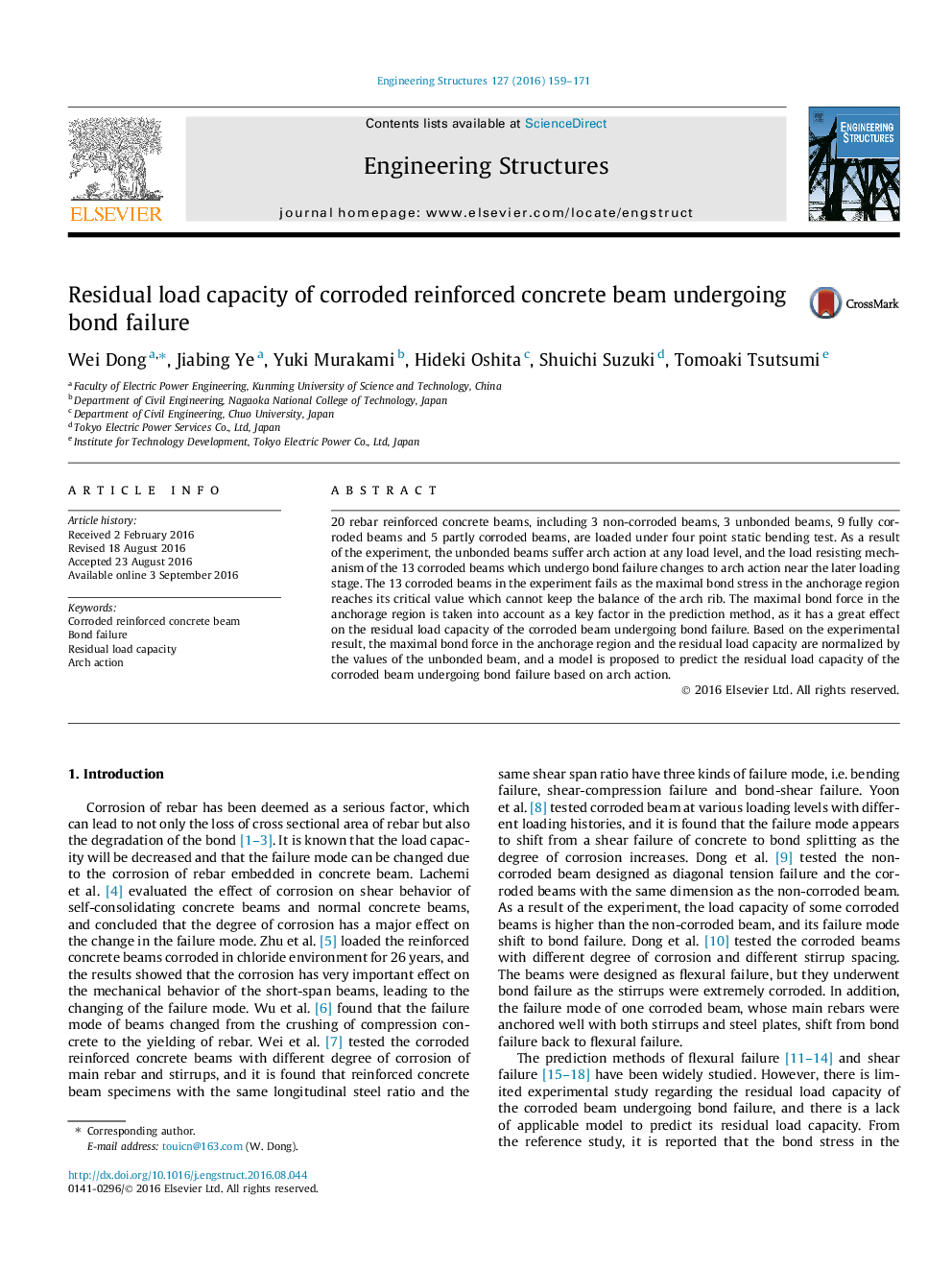| Article ID | Journal | Published Year | Pages | File Type |
|---|---|---|---|---|
| 4920655 | Engineering Structures | 2016 | 13 Pages |
Abstract
20 rebar reinforced concrete beams, including 3 non-corroded beams, 3 unbonded beams, 9 fully corroded beams and 5 partly corroded beams, are loaded under four point static bending test. As a result of the experiment, the unbonded beams suffer arch action at any load level, and the load resisting mechanism of the 13 corroded beams which undergo bond failure changes to arch action near the later loading stage. The 13 corroded beams in the experiment fails as the maximal bond stress in the anchorage region reaches its critical value which cannot keep the balance of the arch rib. The maximal bond force in the anchorage region is taken into account as a key factor in the prediction method, as it has a great effect on the residual load capacity of the corroded beam undergoing bond failure. Based on the experimental result, the maximal bond force in the anchorage region and the residual load capacity are normalized by the values of the unbonded beam, and a model is proposed to predict the residual load capacity of the corroded beam undergoing bond failure based on arch action.
Keywords
Related Topics
Physical Sciences and Engineering
Earth and Planetary Sciences
Geotechnical Engineering and Engineering Geology
Authors
Wei Dong, Jiabing Ye, Yuki Murakami, Hideki Oshita, Shuichi Suzuki, Tomoaki Tsutsumi,
